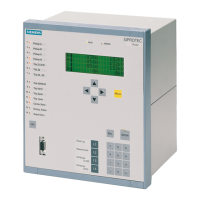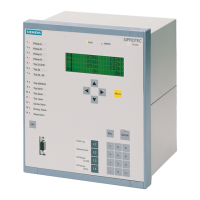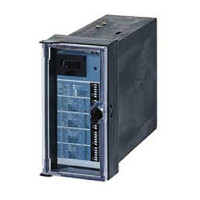1 Introduction
20
7UT613/63x Manual
C53000-G1176-C160-2
Binary Inputs and
Outputs
Binary inputs and outputs from and to the computer system are routed via the I/O
modules (inputs and outputs). The computer system obtains the information from the
system (e.g remote resetting) or from other devices (e.g. blocking commands). These
outputs include, in particular, trip commands to switchgear and signals for remote an-
nunciation of important events and conditions.
Front Elements Devices with operator panel have light emitting diodes (LEDs) and a display screen
(LCD) on the front panel to provide information such as measured values, messages
related to events or faults, status, and functional status..
Integrated control and numeric keys in conjunction with the LCD facilitate local inter-
action with the 7UT6. All information of the device can be accessed using the integrat-
ed control and numeric keys. The information includes protective and control settings,
operating and fault messages, and measured values.
In addition, control of circuit breakers and other equipment is possible from the 7UT6
front panel.
Version 7UT613 provides a 4-line LC display in front, while versions 7UT633 and
7UT635 have a graphic display. The latter also has a key switch and a control key for
on-site control of the device.
Serial interfaces Via the serial operator interface in the front panel, communication with a personal
computer using the operating program DIGSI is possible. This facilitates a comfortable
handling of all device functions.
A serial service interface can likewise make communication via PC with the device
possible by using DIGSI. This port is especially well suited for the fixed wiring of the
devices to the PC or operation via a modem.
All data can be transferred to a central control or monitoring system via the serial
system port. This interface may be provided with various protocols and physical
transmission schemes to suit the particular application.
A further interface is provided for the time synchronization of the internal clock via
external synchronization sources.
Further communication protocols can be realized via additional interface modules.
The service port, or an optional additional interface, can also be used to connect a
RTD-Box (= resistance temperature detector) for entering external temperatures (e.g.
for overload protection).
Power Supply The functional units described are supplied by a power supply PS with the necessary
power in the different voltage levels. Transient dips of the supply voltage, which may
occur during short-circuit in the power supply system, are bridged by a capacitor (see
also Technical Data).
